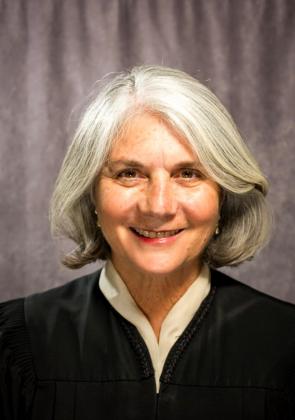In the News
News
Dec 01, 2023
Interview with Judge Wood
Interview with Judge Beverly K. Wood
Dec 01, 2023

Can you tell me about your journey to become a Judge in the Marin County Superior Court?
Well it wasn’t a direct route. I worked at a litigation firm in SF for a bit. Then my husband and I represented several international clients who had invested in the US when the S&L fiasco hit. That was really interesting work on so many levels. The financial aspects were right up my alley and the cultural acclimation was fascinating. (Remember this was in the 80’s). It involved a lot of oversea travel, which I loved but didn’t work as well once we started our family. So I worked at Freitas, McCarthy, MacMahon and Keating in San Rafael from 1993 to 2005 doing more “local” litigation and family law. Great people to work with. My friend Hon. Lynn Duryee urged me to apply to be a Commissioner in 2005. I was selected by the bench and found I really liked the work. After a few years I applied to a judicial appointment.
Can you share an example of a particularly impactful event in your career that reaffirmed your commitment to the legal profession?
When I was a first year associate my supervising attorney sent me to Alameda County to handle a trial call. “don’t worry, it will not go out, just get a new date”. Well it did. I was on my own for a two week covenant not to compete jury trial. I was representing the plaintiff, who I really felt had been wronged. I remember sitting in a phone booth in the hallway (remember phone booths!) and the partner telling me to do my best. I think I went without much sleep for those two weeks, and it may have been a pity verdict by the jury, but my client prevailed and I felt the taste of justice. Pretty cool.
When I was a commissioner I volunteered to handle the Prop 36 (a statutory drug court). It was a tough slog and I tended to run a tight ship, but so many individuals who were in the program would come up to me after they finished (sometimes years later) and thank me. It really made the hard work worth it. I still see some of those folks. It’s a great feeling of community.
Your leadership extended to support new endeavors, such as the Marin Community Court. Could you discuss how you navigated the challenges and achieved success in this endeavor?
There are a lot of endeavors that I am very proud of. Judge Adams and I (mostly Judge Adams) worked together over the years to really improve our family and juvenile courts. They are now more integrated, more holistic, and provide opportunities and services for families that just did not exist. How did we do it? There was a lot of bridge building between entities and with the help of volunteer attorneys and mental health professionals. MCBA members have been very generous.
With respect to Community Court, that was a miracle. I was just a commissioner and the whole concept was initially not well received. That Court got off the ground by working with Legal Aid and St Vincents. The cost to the state was zero dollars. It was 100% volunteer –I handled it after my regular calendar, our court clerk (Hoang LeClerc) volunteered, we had a retired bailiff from SF who volunteered and of course, MCBA lawyers were there every step of the way. So the key to creating these programs? Collaboration, generous volunteers, and minimal financial impact.
You spent years in dependency court and juvenile court, working with struggling families and various agencies. Could you describe some of the challenges you have witnessed and the evolution of the court’s response?
I mentioned above the concept of creating a more wholistic approach. Generally, one had to handle each aspect of dysfunction separately—transgressions of a minor, abuse or neglect of a parent, dysfunction within the family system. I really believed that we could do better by addressing the family as a whole. First we created a unified family court so that the juvenile judge takes on the family law case. Next we created a dual status protocol so that a minor could be both a dependent and in the juvenile justice system. That way we can work on both the parents and the minors at the same time using the tools of behavioral health, children family services and probation at the same time. There is one judge who has all the information, who meets with the family regularly, and who makes (hopefully) consistent orders. We are in the process of starting a Dependency Drug Court which will provide even more services and management for parents whose children have been removed from their care. This has been a major shift in juvenile court here in Marin. We still squabble, but there is very much a team approach.
What advice do you have for young legal professionals who aim to make a meaningful impact within the legal field and their communities?
Find something that interests you. Try it. Be it a volunteer opportunity or a field of practice. They may not be the same thing—but you might be surprised at how they complement each other.
Would you share your thoughts regarding the greater legal community in Marin County?
Marin is the envy of other counties—the gold standard for our programs. Those programs depend heavily on our legal community. When I attend conferences with other judges and mention what we do they are amazed at our culture. Our legal community is generous beyond words. I also think there is a lot of genuine affection within the community and a good sense of mentoring younger attorneys.
What follows your retirement?
I am going to take a few months off to rest, and maybe a bit of travel and grandparenting. In the Spring I plan on doing some family law mediations. I am not going to join any group, but will work locally and low key. Judge Adams will do private judging so we get to continue our collaboration. I am going to do my best not to take on too many projects—a habit that is hard to break.












